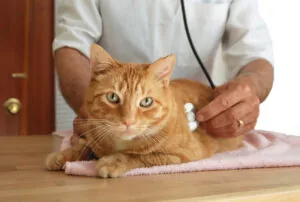How to Take Care of Your Lizard

While lizards make fun, fascinating pets, caring for one is nothing like caring for a cat or a dog. If you’re looking to add a reptilian friend to your family, it’s important to learn how to take care of a lizard in order to offer it a safe home. With over 4,500 species of lizards in the world, there are a lot of nuances to caring for each one. Lizards are an incredibly diverse group of animals. In the wild, they live in a wide range of habitats, from the driest deserts to the steamiest rain forests. Some lizards are herbivores, some are omnivores, and some eat only insects. Have a conversation with a veterinarian who specializes in reptiles and/or lizards to help fill in any blanks you may have when it comes to interacting with or caring for your lizards, and make sure you learn about your potential lizard’s diet, size, life span, temperature and humidity requirements and how to handle your lizard before taking it home. There may be a lot to learn, but that’s just part of the adventure! Here are some general guidelines to help you care for your pet lizard.
What Your Lizard Cage Must Provide
Security. Heating. Humidity. Lighting. Space. These are the five key factors you must keep in mind when choosing a lizard cage for your new pet. So let’s talk about these five considerations:
Security Requirements
The cage must be able to keep your pet from escaping. Likewise, it must also protect your pet lizard from intruders, such as the household dog or cat. Some lizards are very good at escaping, so it’s best to choose a professional cage designed specifically for the type of pet you want to keep. It is not recommended to build your own lizard cage unless (A) you start with a good plan and (B) you have the right skills for the job.
Heat Control
First, you need to research the temperature requirements for the lizard species you plan to keep. Then you must choose a type of cage that allows you to maintain those temperatures. You can heat a reptile enclosure in several ways, but the cage must be able to hold the heat in some way.
Humidity Control
Some lizards have higher moisture requirements. Some are desert dwellers and need a dry cage, while others are tropical Certain types of lizards have high humidity requirements. Tropical species, for example, need to be kept in a cage or tank that maintains a higher level of humidity than a desert-dwelling species.
Sufficient Lighting
Most lizards are sun lovers. A few species spend a lot of time burrowing underground. But for the most part, lizards need frequent exposure to sunlight. In captivity, you can’t always duplicate this. So you have to do the next best thing. You have to use full-spectrum lights to duplicate the benefits of the sun (as much as possible). Remember this when choosing a lizard cage for your pet. It must allow the use of special lighting, as needed for your chosen species.
Space and Orientation
Sure, that baby iguana is cute. And it’s so tiny! But a full-grown green iguana could be nearly six feet in length and will require plenty of cage space. On the other hand, certain species like the geckos can be housed in much smaller enclosures. You will need to research the space requirement for your pet lizard, and make sure you can meet those requirements before you bring the animal home.
You also need to choose a cage that is oriented properly for your particular pet, depending on whether it spends most of its time on the ground or in trees.
What to Feed Your Lizard
There are many species of lizards and each has different dietary requirements, but generally speaking, lizards eat an omnivorous diet. This means your lizard will be healthiest when eating a mix of plants and insects or rodents, depending on his breed.
Many lizards fill the carnivorous side of their diet with crickets, worms or certain species of roaches. Larger, carnivorous lizards, such as monitor lizards, will do best eating rodents — specifically, mice. It’s important to remember that lizards often prefer eating the meat portion of their diet alive. You should be able to find any of these insects or rodents for sale in your local pet store or online. When it comes to eating plants, lizards enjoy a mixture of leafy greens and fruit, which you can purchase at your local grocery store. Generally speaking, romaine lettuce, yellow squash, blueberries and collard greens offer nutritional value to lizards. However, some fruits and vegetables can be harmful to lizards, so be sure to research which ones are ideal for your pet before you feed him.
Quality Time with Your Lizard
When learning how to take care of a lizard, it’s important not to overlook how to handle him. While lizards don’t typically enjoy being handled, it’s still important to know how to do so safely. After all, you will need to safely remove your lizard from his enclosure periodically to clean it or to take him to the veterinarian. Once again, the best practices for handling lizards will vary by species, but the following is a general idea of how to go about it. When picking up your lizard, try to scoop him into your hand and gently clasp his head between your thumb and forefinger. This will keep him secure and sheltered. For larger lizards, you will likely need to use two hands. Hold your lizard’s hind legs back toward his tail with one hand, to prevent him from scratching you and grasp his body under his front legs with the other hand. Small lizards, in particular, are very fragile, so it’s best to avoid handling them unless absolutely necessary. They are vulnerable to losing their tails or being squeezed too tightly, which may cause internal damage. If you have a small lizard, make sure you handle him very gently and do not let anyone else hold him unless they are experienced with handling small reptiles. Remember, being held is stressful for lizards, as they do not see their human caretakers as friends the way a cat or dog would. Instead, they usually feel threatened in the hands of such a large being and may even bite you. Don’t take it personally if this happens; remember that they’re following their instincts.
If your lizard is uncomfortable being held, it’s best to avoid doing so, if it all possible. It’s natural that you want to pick up your pet and show him off but remember, it’s best to put his comfort first.
Cautions with Owning a Lizard
There is a health risk associated with owning any reptiles. Seventy thousand people in the U.S. contract salmonellosis from direct or indirect contact with lizards, reptiles and amphibians every year. Children, pregnant women, and people with compromised immune systems are particularly at risk of serious illness or death. If you or anyone close to you is in one of these categories, rethink bringing a reptile into your home—even healthy-looking animals may be carrying the disease. Many reptiles are brought into the country with little or no inspection or quarantine.
Owning a lizard may require more research and attention to detail than owning a different type of pet, but it’s certainly a rewarding experience. Learning the ins and outs of how to take care of a lizard is just part of the fun of owning this type of pet!
Share This Post
Recent Posts
About Shallowford Animal Hospital
Shallowford Animal Hospital and The Pet Spa at Shallowford are dedicated to the exceptional, compassionate care your pet deserves. Pets hold a very special place in our families, and we treat yours like our own.



